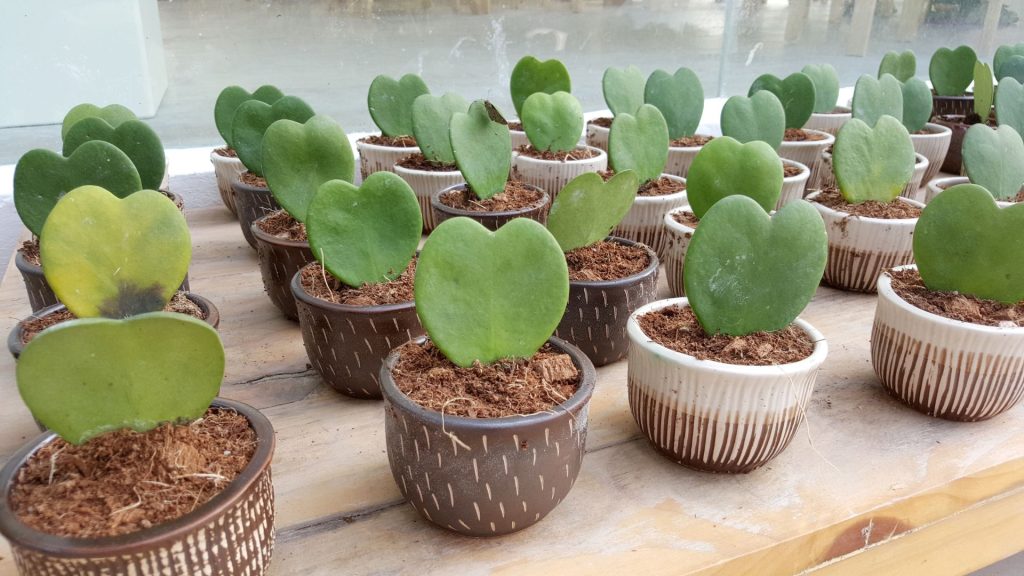Hoya kerrii has many unusual names, such as ‘Sweetheart hoya‘ or ‘Valentine cactus plant’. This is due to the original shape of its leaves – in the shape of a heart. The symbolic plant is often presented as a gift to loved ones, especially since, according to Chinese legends, it brings love and peace to the house. The beautiful appearance makes this tropical plant a favorite of flower growers.
Hoya Kerrii Types
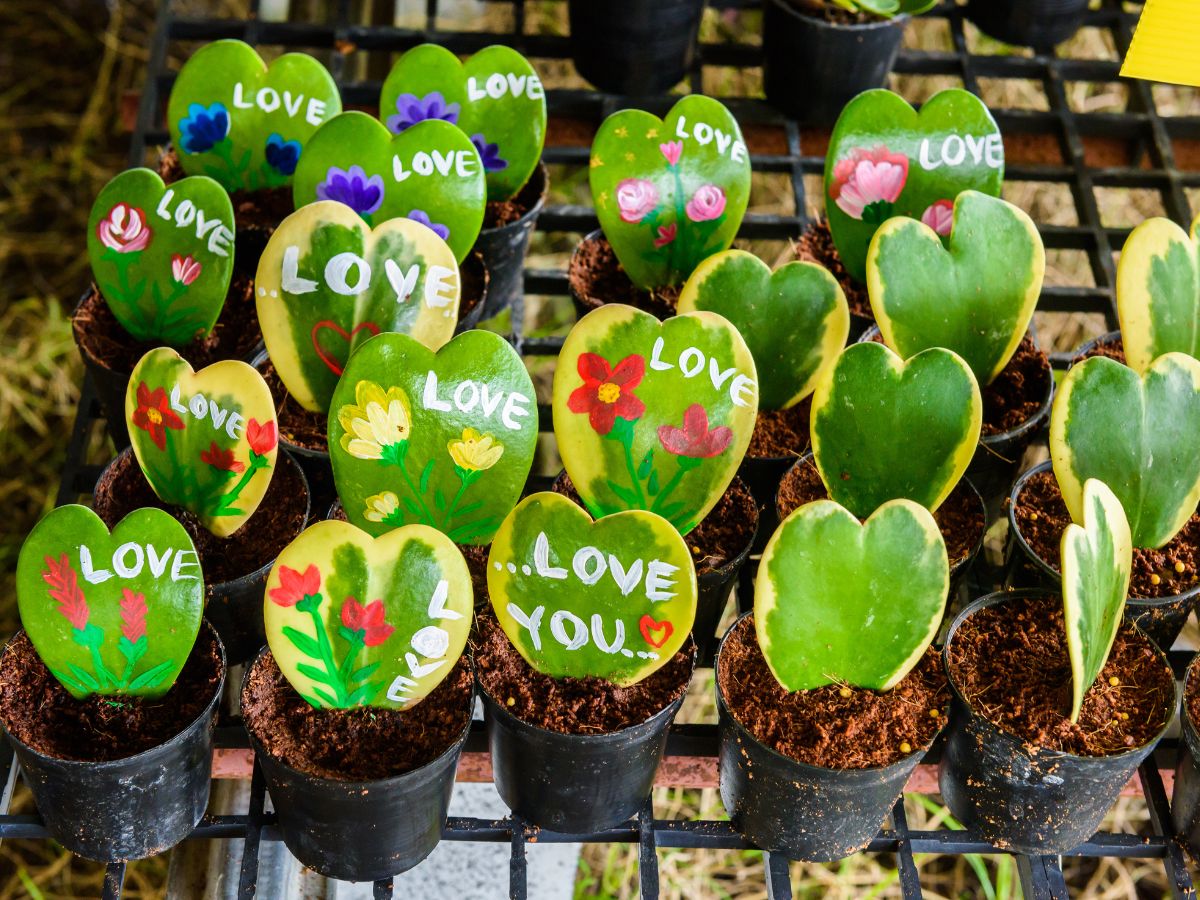
- Hoya kerrii ‘Spot Leaf’. It is distinguished by original foliage, decorated with specks and dots of a lighter shade.
- Hoya kerrii ‘Variegata’ is a very unusual member of the species. It is also called variegated since on the leaf, there are changes in the yellow tint.
- Hoya kerrii ‘Albomarginata’. This flower is distinguished by a luxurious edging along the edge of the leaves, which is lighter in tone than the main color.
- Hoya kerrii ‘Spot Center’. A characteristic feature of this species is the elongated structure of the leaves and the accumulation of spots in the middle.
- Hoya kerrii ‘Spot Margin’. The shape is usual for a representative of this species, it is distinguished by its light border and dark middle.
All subspecies have very fleshy leaves, which is why the veins are practically not visible. They have the shape of an inverted heart with a length of 2-6 inches, the width varies within the same range.
Hoya heart plant flowers reach up to 1 inch in diameter. Their white color can be diluted with yellow or pinkish. The inflorescence is umbellate. The light intensity changes the brightness of the colors. As the plant ages, it produces more nectar, which gives the flowers a darker tone. When flowering, hoya gives off a persistent aroma.
Now that we have got to know this amazing plant better, let’s find out how to care for the hoya heart plant.
Care for Sweetheart Hoya
Light Requirements
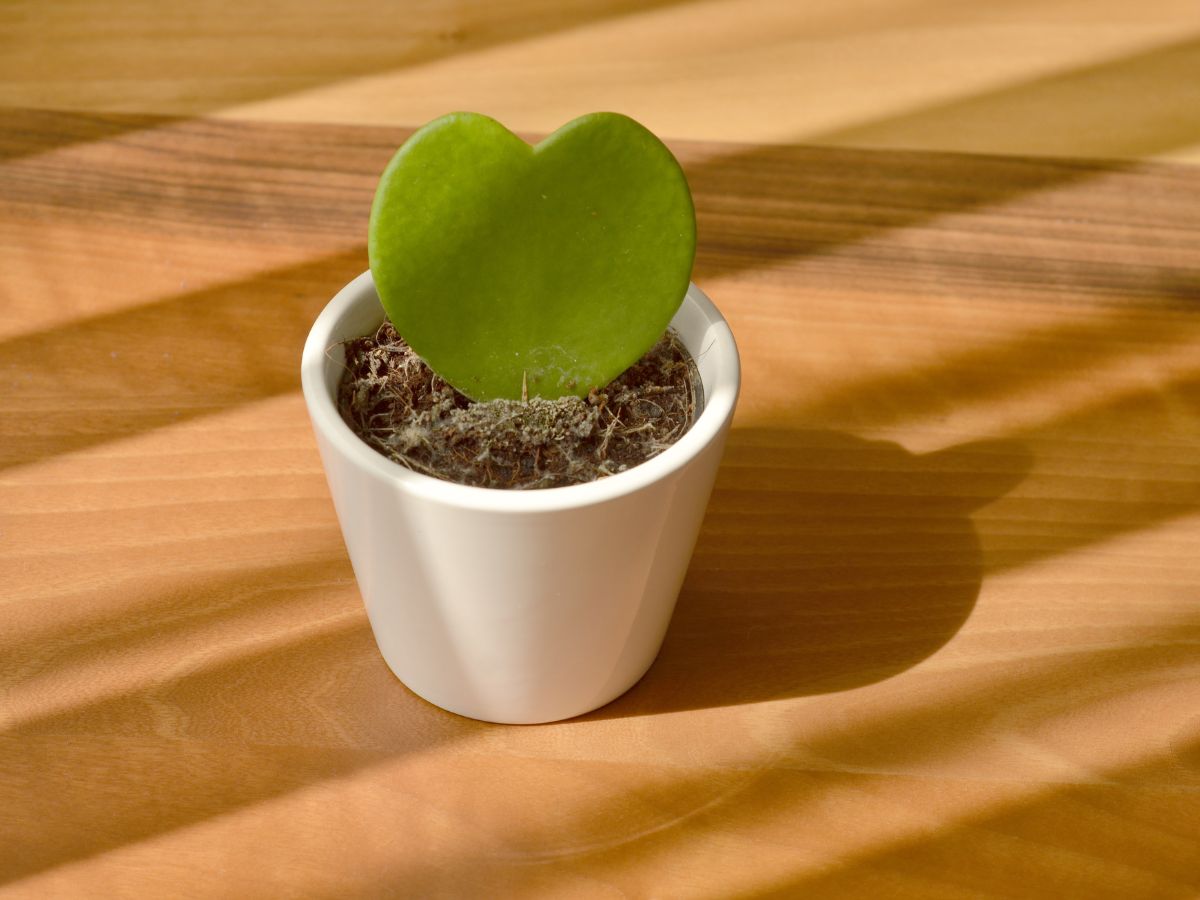
Do hoyas like direct sunlight? This question worries many gardeners who have just purchased this charming plant. Well, outdoors, sweetheart hoya plant grows well in partial shade (diffused light or shading at midday hours) or even shade. Growing indoors, it needs a fairly bright place and some direct sun (no more than two hours a day), although it can grow in the shade, and in general in any corner of the house or office. Bright light stimulates flowering and stronger leaves. But being in direct sunlight for a long time, hoya kerrii can get burned.
Watering
Due to its succulent properties, hoya can store water for a rather long period between waterings. During the growing season, the plant should be watered regularly, but not overwatered, as it is sensitive to moisture and must dry out between waterings. The plant can easily lose its roots if they are constantly wet. In winter, hoya is kept dry with good ventilation and can be watered once a month. High air humidity is not needed during the dormant period. Care should be taken when watering hoya kerrii, as the plant tends to grow with excess water and insufficient lighting and takes on a sloppy appearance.
Fertilizers
During the active flowering period, the hoya heart plant can be fed. The most versatile fertilization option is a special feeding for flowering succulents and cacti. The mixture must contain potassium. The frequency of feeding the hoya kerrii plant is controversial – experts recommend doing this once a month, but it is better to do it less often than more often, as an excess of fertilizer is harmful.
Best Soil Mix for Hoya Kerrii
Loose and nutritious soil is suitable for hoya kerrii. In specialized stores, you can buy soil for decorative deciduous plants. If it is not possible to buy soil, then you can prepare it yourself. The self-compiled soil must be disinfected in any convenient way – by calcining it in the oven at a temperature of 392 °F for an hour or putting it in the freezer or the refrigerator for 24 hours.
Since the heart-shaped plant is an epiphyte, it must be planted in a porous nutrient medium with good drainage. You can use shredded coco coir. The substrate must retain moisture.
Repotting
Heart hoya doesn’t need frequent repotting. It is enough for hoya to change its pot every few years. With young plants, this manipulation can be carried out more often – once every 1-2 years, if necessary. To transplant it, you need either a new pot or a sterilized old one. Even only the purchased container must be washed with soap and water before use. Do hoyas like small pots? This is of interest to many gardeners who are used to taking new pots for plant transplanting much more than the previous ones. These plants do like to have tight quarters.
Pruning
Pruning can harm the heart cactus plant. In some cases, pruning is carried out if: there is a diseased leaf; a cutting is needed for reproduction. Then choose the one that has never bloomed. The old inflorescence is not removed. From the same places, new flowers would appear next summer.
Temperature
Maintaining the proper temperature is an integral part of care for hoya kerrii. The temperature in summer should be in the range of 62-71 °F, in winter it is lowered to 61 °F. 59 °F is the lower limit that the hoya can survive.
Hoya Heart Propagation
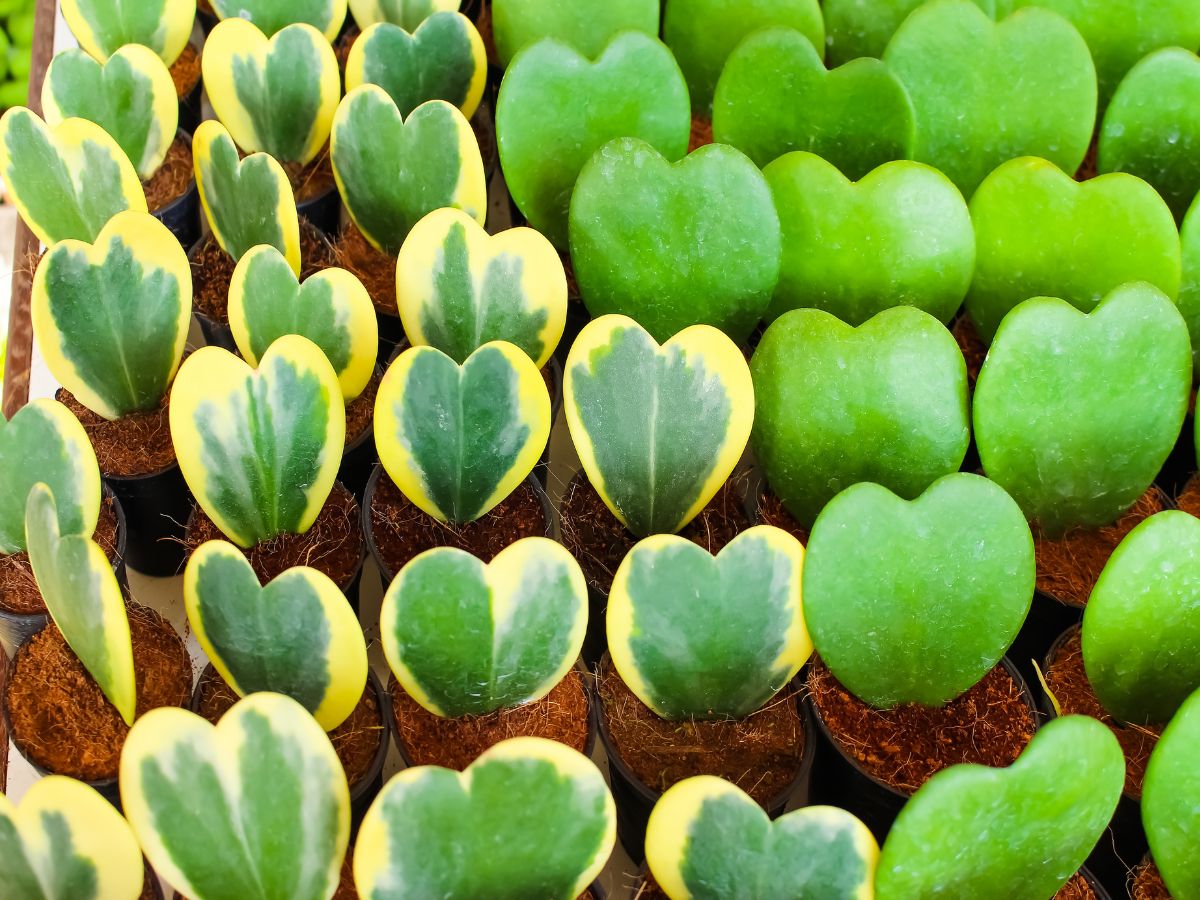
There are three main methods to propagate the hoya sweetheart plant at home:
- cuttings;
- by leaf;
- seeds.
Cuttings
Even a novice florist can easily master it. Following simple guidelines guarantee success:
- you need to cut off the stalk with a clean sharp knife;
- small cuttings with at least one leaf reproduce more efficiently;
- nodes must be formed on the cutting.
Rooting is done in two ways.
- In water. One knot of the cutting should be completely submerged in water. The container is covered with foil and placed in a warm place. After the formation of short roots, the plant is planted in a pot.
- Into the soil. Short cuttings are planted in loose, moist soil, the container is placed in a warm place. Leave until roots are formed, after which they are transplanted into a pot. Then you can take care of it as a normal mature heart succulent.
Leaf Propagation
Hoya kerrii propagation with a single leaf is recommended to use with powder for root formation. Choose a leaf with any petiole rudiment. The planting angle is 45 degrees. The soil is as loose and light as possible, the container should be disinfected.
Seeds
Seed reproduction of hoya kerrii is the most difficult method, since it is very problematic to buy ready-made seeds, and they rarely ripen. But if you decide on it, take a moisture-permeable soil, add burlap, felt pieces, or any artificial fabric to it.
After the seeds have been collected, it is not recommended storing them; it is better to try planting in the first year. The soil should be well moistened, but not excessively.
Hoya Diseases
This heart-shaped succulent is very susceptible to mealybugs, which attack the stems and roots of the plant and can trigger fungal infections. If the hoya kerrii heart has dead or dying stems, you must immediately remove them completely, separate the healthy parts of the plant, dry them, and root them in new soil.
How Fast Does Hoya Kerrii Grow?
Hoya kerrii growth rate is quite small. It can take many years to grow this plant up to 10 feet.
Will Single Leaf Hoya Kerrii Grow?
Unfortunately, you cannot grow this plant with a single leaf. In general, heart-shaped cactuses are very easy to propagate. Like other plants, they need a knot to successfully develop further into a plant.
Possible Problems When Growing Hoya Kerrii
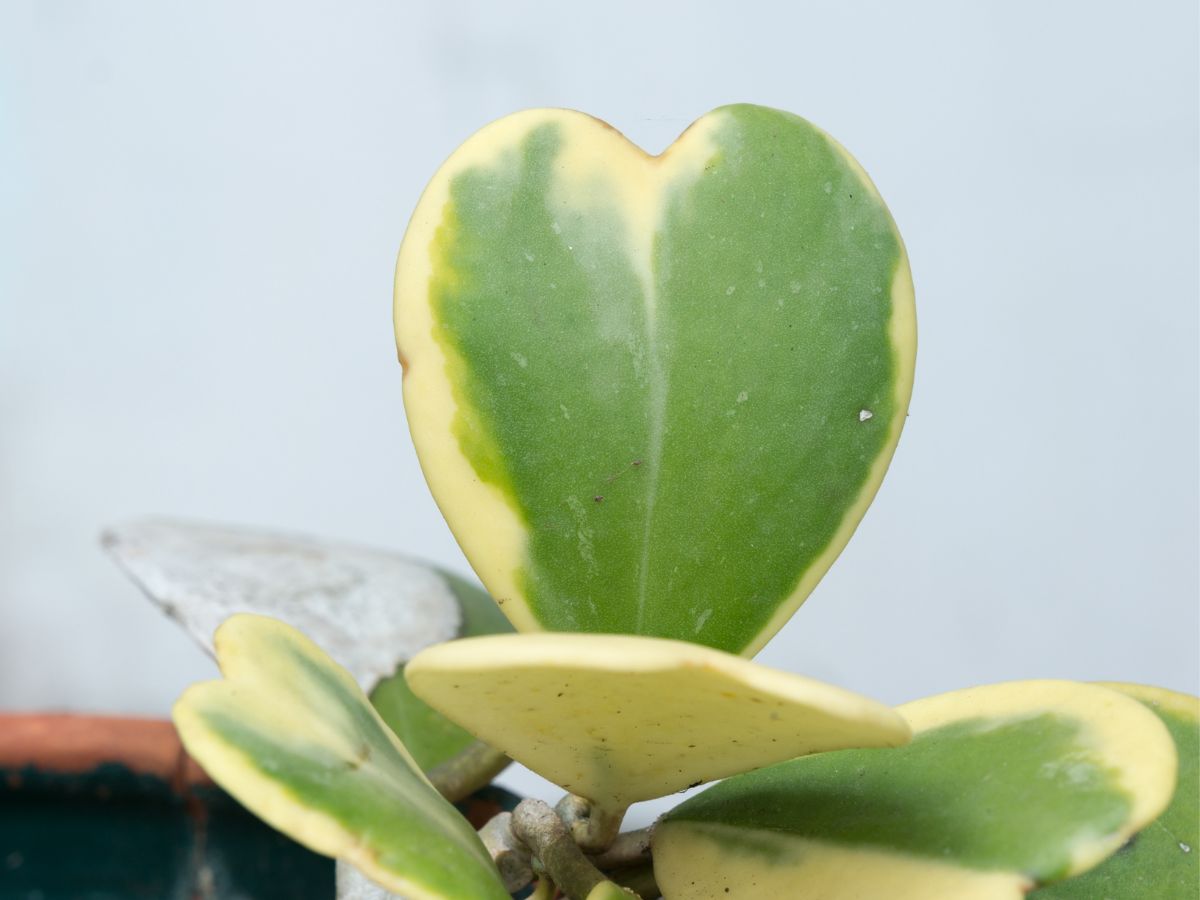
- Seals and spots on the leaves indicate a viral disease. It is necessary to place the plant in isolation and, if the diagnosis is confirmed, destroy it.
- A softening of the trunk and shoots with the release of a foul-smelling liquid indicates a bacterial infection. The infected areas should be removed and sprayed with copper sulfate.
- Spots on foliage indicate too bright rays, an excess of mineral fertilizers, or a low watering temperature.
- If the heart-shaped cactus has stopped developing, the color has lightened, which means that the hoye lacks nitrogen.
- Falling foliage – improper watering, excess or deficiency, dry air in the room.
- If the foliage turns red, you need to lower the air temperature and protect the flower from sun exposure.
- Dropping buds and flowering means the plant has been moved to a different location. Also, the reason may be insufficient watering, lack of sunlight.
- Modest flowering means the plant has little light.
- If your hoya kerrii is turning yellow, it may indicate over-watering.
Is the Hoya Plant Poisonous?
Don’t worry, the hoya plant is not toxic to humans or animals. The University of Connecticut lists the Hoya as a non-toxic houseplant that is safe for people and pets. Hoya heart would suit patient and caring owners: do not expect rapid growth from it. The most important thing in caring for it is to maintain the desired air humidity and not disturb the plant during hibernation. Then, after a couple of years of care and love, the vine will give those around it its unique color, filling the room with a delicate caramel aroma.


